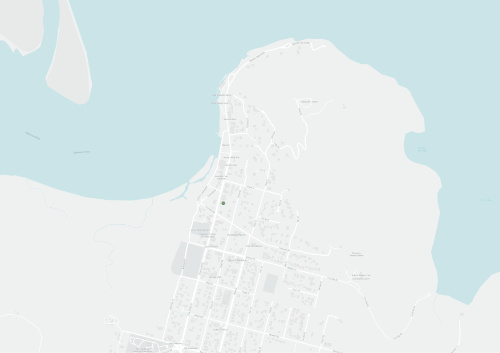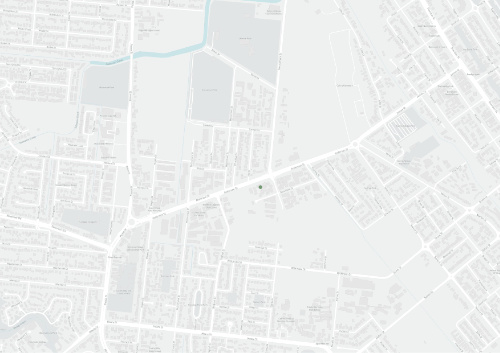Plan Explorer
Filter by:
Region
Topic
Sector
Other
Results
Mungumby Community Plan
Current CommunityThis document was released in March of 2012 following a 2007 Federal Court ruling which recognised the Eastern Kuku Yalanji people's of 129,600ha of country between the South Mossman River and just North of Black Mountain near Cooktown.
Wujal Wujal Aboriginal Shire Council planning scheme
Current CommunityThe Wujal Wujal planning scheme was released in 2013 by the Wujal Wujal Aboriginal Shire Council and set out the council's intention for the future of Wujal Wujal over the next 20 years from 2013.
Napranum Community Plan
Current CommunityThe Napranum Shire Council released a community plan in 2012 looking at future development for (then) the next 10 years.
Mapoon Aboriginal shire council community plan 2010-2020
Current CommunityThis community plan outlines how the community and council believe that the Mapoon area should develop between the 2010 and 2020 period and sets out how the issues affecting the Mapoon region at the time should've been addressed and a vision for the future Mapoon.
Hopevale community plan 2012
Current CommunityThe intent of the community plan is that it will represent the community’s views, visions and values for the future of the local government area, and set a strategic vision for what the community wants the area to be like in 10, 20 or more years.
Port of Weipa environmental management plan
Current StrategicThis environmental management plan was released by the North Queensland Bulk Ports Corporation as part of their environmental program with the objective of acting as a reference document for all then-current and potential users of the Weipa port.
Brumby Hollow Property Pest Management Plan
Obsolete OperationalThis plan outlines the sustainable land management practices for Brumby Hollow over 4 years. Objectives are:
Bunata Property Pest Management Plan
Obsolete OperationalThis plan aims to protect the economy and environment of Bunata from the adverse impacts of weeds and feral animals.The objectives for weed and feral animal management in Bunata over the next 4 years are:
Butchers Hill Station Pest Management Plan
Obsolete OperationalTo manage the land of Butchers Hill Station, in a sustainable way, by controlling weeds and pest animals on the property, and ensuring it’s economic and environmental viability continues into the future.
Threats to priority species of the Cape York Peninsula region
Current Government PolicyOn day one of the regional workshop, participants used their knowledge of individual species to identify the major and minor regional threats that are affecting each species. On day two of the regional workshop, species were grouped by major threats.
Cape York Peninsula Feral Pig Management Plan 2006-2009
Obsolete OperationalThe Cape York Peninsula (CYP) Pest Management Strategy provides a planning framework for coordinated pest management between research bodies, agencies, communities, industries, individuals and the government.
Queensland Pest Animal Strategies - Feral Pigs (Sus scrofa)
Obsolete Government PolicyThe overall vision of the feral pig management strategy is to use best practice
management to minimise the impact of feral pigs on the environment, economy and
health of Queensland.
The strategy is intended to achieve five outcomes:
Cape York Peninsula Pest Management Strategy
Obsolete StrategicThe Cape York Peninsula Pest Management Strategy (CYPPMS) is a broad over-arching document that establishes a Cape-wide planning framework for integrated pest management by government, community, industry and individuals.
Jim's Joint Property Pest Management Plan
Obsolete OperationalThe plan has been prepared to protect the economy and environment of “Jim’s Joint” from the adverse impacts of weeds and feral animals.
Julery Pastoral Property Pest Management Plan
Obsolete OperationalThe plan represents a workable pest management program which identifies, combats and eradicates declared environmental pest plants and feral animals for Julery Pastoral.
Maitland Downs Property Pest Management Plan
Current OperationalThis plan provides a sustainable land management program for Maitland Downs, to control weeds and pest animals on the property, to ensure it’s economic and environmental viability continues into the future.
Cape York Peninsula Pest Management Plan 2006 - 2011
Obsolete StrategicThe Cape York Peninsula Pest Management Plan (CYPPMP) establishes a Cape-wide planning framework for integrated pest management by Government, Community, Industry and Individuals.
Eastern Kuku Yalanji Indigenous Protected Area Management Plan Stage 2
Current CommunityJalunji-Warra Land and Sea Country
(excerpt)
Cape York Peninsula Regional Biosecurity Strategy
Current StrategicCape York Natural Resource Management (Cape York NRM), Cook Shire Council (CSC), Weipa Town Authority, Wujal Wujal, Hopevale, Lockhart, Mapoon, Napranum, Aurukun, Pormpuraaw and Kowanyama Aboriginal Shire Councils and the Northern Peninsula Area Regional Council (NPARC) have collaboratively devel
Recently added
Upper Mitchell Catchment Rehabilitation Plan
Current StrategicTechnical Report on Rehabilitation Needs
Strategic Cropping in Cape York
Current InformationalStrategic Cropping in Cape York – what is to be locked away in the draft Strategic Environmental Areas
Reef Water Quality Protection Plan 2013
Current Government PolicyReef Plan is a joint commitment of the Australian and Queensland governments. The plan is a collaborative program of coordinated projects and partnerships designed to improve the quality of water in the Great Barrier Reef.
Planned Burn Guidelines - Cape York Peninsula Bioregion of Queensland
Current OperationalThis guideline was developed as part of the Department of National Parks, Recreation, Sport and
Cape York Peninsula Pest Management Plan 2006 - 2011
Obsolete StrategicThe Cape York Peninsula Pest Management Plan (CYPPMP) establishes a Cape-wide planning framework for integrated pest management by Government, Community, Industry and Individuals.
Mitchell River Watershed Strategic Plan
Current StrategicThe Mitchell River Watershed Strategic Plan 2013-2016 is an update of the Mitchell River Watershed Management Plan created in 2000.
Maitland Downs Property Pest Management Plan
Current OperationalThis plan provides a sustainable land management program for Maitland Downs, to control weeds and pest animals on the property, to ensure it’s economic and environmental viability continues into the future.
Laura-Normanby Catchment Management Strategy
Current StrategicThe Laura-Normanby Catchment Area covers a vast and relatively undeveloped area with extensive riverine and wetland systems, one of Queensland's largest conservation areas (Lakefield National Park), numerous sacred aboriginal sites, good cattle country and rich agricultural lands.
Laura Ranger Country Plan and Poster
Current OperationalPoster outlining a set of guiding priniciples on which Laura Rangers will operate on their country.
Kuuku I’yu Northern Kaanju Ngaachi Cultural Heritage Management Plan
Current OperationalThis document outlines the cultural heritage management plan for the Kuuku I’yu Northern Kaanju Ngaachi for the next six years from 2011 to 2017.

